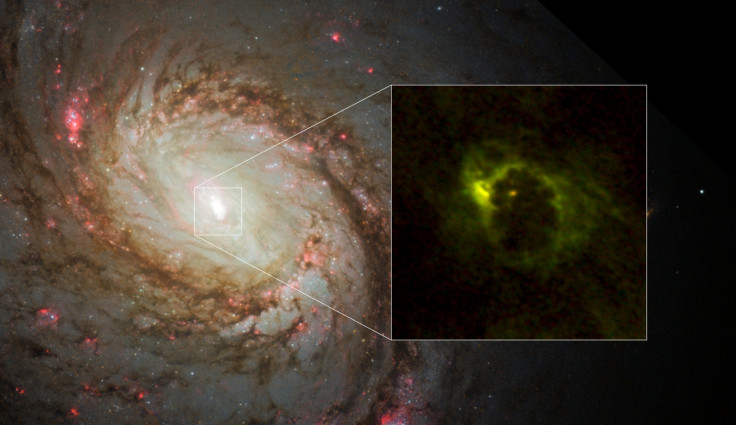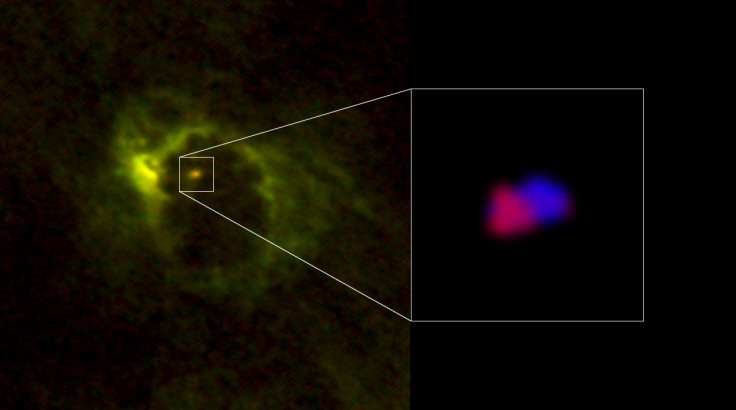Monstrous black hole captured inside a giant 40-light-year-wide 'space doughnut'
The giant void is a supermassive black hole located at the centre of spiral galaxy M77.

A group of researchers, using the Atacama Large Millimeter/submillimeter Array aka ALMA telescope, have captured a monstrous black hole inside a giant 40-light-year-wide "space doughnut".
The giant void is a supermassive black hole located at the centre of spiral galaxy M77. Scientists have seen the centre of this galaxy, located 47 million light-years away from Earth, on a number of occasions, but the humongous "doughnut" around its black hole was never seen.
It is a massive ring or "torus" of gas and dust which spans a whopping 40 light-years and is rotating around the monstrous void. Scientists have long theorised the presence of these dense, rotating structures but is the first clear view.
"To interpret various observational features of AGNs [or active galactic nucleus where the black hole feasts], astronomers have assumed rotating donut-like structures of dusty gas around active supermassive black holes. This is called the 'unified model' of AGN," said Masatoshi Imanishi, the lead author of a paper
However, the distribution of gas around the black hole is far more complicated than what has been suggested by the unified model. The ringed structure lacks symmetry and is rotating according to the gravitational pull of the black hole with highly random motion.

This suggests that the spiral galaxy may have had a violent past or merged with another galaxy. In contrast, the supermassive black hole located at the centre of our galaxy is pretty quiet and with only a small amount of gas and dust around it.
Ultimately, Imanishi and his colleagues want to use observations like these to unlock the mystery behind the growth of black holes and how they evolve with their host galaxies.
The findings from the latest observations are published in the Astrophysical Journal Letters.





















